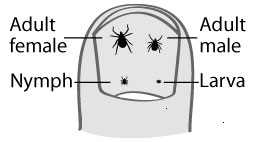Ticks bites - prevention is easier than cure!
/With the summer holidays here, many of us will be taking advantage of the fantastic weather and heading out for walks and picnics. Uppermost in out mind when thinking about things that sting and bite will be wasps, bees and horseflies, but what about Ticks?
A bite from an infected Tick can lead to a debilitating condition called Lyme Disease. Recently I was at a health summit and one of the speakers was a lady, now aged 42, who had been bitten by a tick 20 years ago and had been utterly debilitated by the disease all that time. She was trying to raise awareness of Lyme disease and quite rightly pointed out that many GP surgeries have posters up about tropical diseases or rashes from coral, but not about something we could get from our own back garden! I thought, with most of us being fairly 'outdoor ' people, I'd send a quick email with a bit of information for you to look at.
Ticks can be found all over the UK in areas where there is grassland, animals and deeply covered vegetation - that makes Knole Park and it's trails highly likely! Apparently the ticks, which are tiny, sit on the ends of the blades of grass or plants, so they rub off onto our bodies.
They are most active between March and October, but only 0-15% are infected. As you cannot feel them bite you the advice is to wear insect repellent on your legs or keep them fully covered and always do a tick check of your skin after a walk or a run.
Adults tend to get bitten below the waist, they like creases so behind the knees, in the groin and children above the waist even into the hairline and scalp.
Removing a tick has to be done carefully because if you squeeze the body, there is a chance that the infected contents will go into the bit wound. Read more about it here.
I've put a little video in so you can have a look - if you want to and if you want to know more check out this website.


